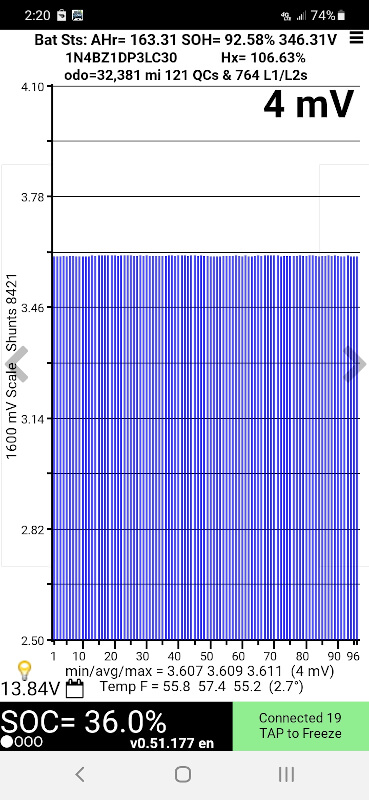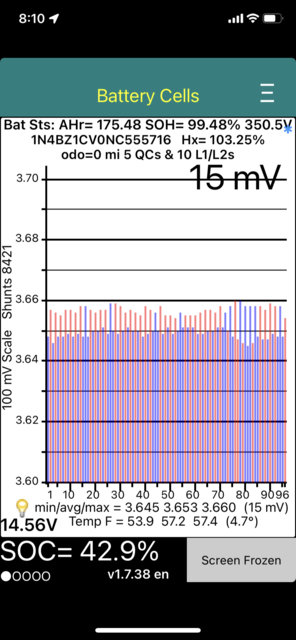Just to be clear, Leaf Spy reads "Gids", ampere-hours, SOH, and Hx (along with cell and pack voltages) directly from the LBC. Leaf Spy calculates the kWh it displays by multiplying the "Gid" value by the constant chosen in the Leaf Spy settings. Therefore, the kWh displayed will be different if a different constant is chosen. The available settings range from 65 to 80 Wh per "Gid" in the latest version of Leaf Spy Pro. According to Ingineer, early Nissan information defined the integer value we call "Gid" as 80 Wh for each increment. I believe the latest version of Leaf Spy Pro uses 77.5 as the default value, but I always use 80 so I can directly compare my latest information to information from my earlier cars.
My full discharge tests every three months probably perform a balancing function similar to what Knightmb described because I drive the car until the battery is as low as I dare and then run climate control in the driveway until the main contactor opens. I start the L2 charge cycle as soon as I finish recording dash and Leaf Spy data. I record energy from the wall and charging time along with dash and Leaf Spy data after the charge is complete. I did these tests monthly with the 2011 (replacement battery) and 2015, but decided to do every 3 months with the 2019 because of the extra discharging and charging time required for each test.
I have really not noticed a loss of range, but know that the energy stored in the battery during my last test was 93% of the first test so I am quite certain that the actual useable range is 93% of when the car was new (if all other variables are accounted for). I believe I could still get the EPA published range with careful driving (if I had the patience to drive slow and gentle). To add a little perspective to range comparisons/calculations, my 2019 is on the second set of replacement tires and there is a 9.5% difference in efficiency between the worst and best of the three sets of tires (over the life of the tires).


